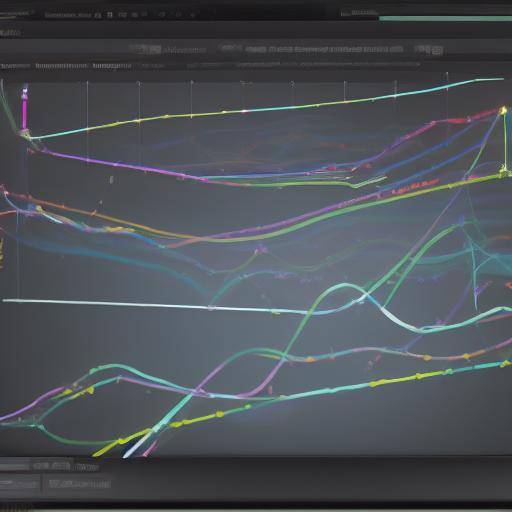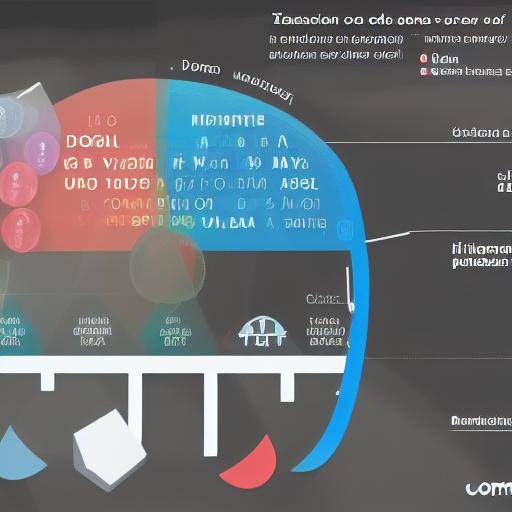
The challenge of maintaining concentration in a world full of distractions is a constant struggle for many. However, the Pomodoro technique has proven to be an effective tool to increase concentration and productivity. In this article, we will explore in depth how the Pomodoro technique impacts the concentration, mental focus and work efficiency. From its historical origin to its application in everyday life, we will discover how this technique can benefit people from all spheres of life.
Introduction
The Pomodoro technique, developed by Francesco Cirillo in the late 1980s, has become a popular practice to improve productivity and concentration. It consists of dividing work time in short intervals, usually 25 minutes, followed by short breaks. This broken mental approach allows people to focus intensely on a specific task over a short period of time, avoiding mental fatigue and increasing efficiency.
The Pomodoro technique has gained followers worldwide due to its simplicity and effectiveness in improving focus and concentration. In this article, we will explore in depth the impact of this technique on concentration, mental focus and work efficiency, as well as providing practical advice, comparative analysis and future predictions on its application.
History and background
The Pomodoro technique finds its origins in the 1980s, when Francesco Cirillo, inspired by a tomato-shaped chronometer (pomodoro in Italian), developed this approach to increase his own productivity during his university studies. This technique is based on the concept that dividing work in short and programmed intervals can improve concentration and reduce procrastination.
During its evolution, the Pomodoro technique has experienced changes and adaptations to meet the needs of a variety of professional and working environments. Throughout each stage of development, it has been shown that this technique significantly improves concentration and performance in various labour and creative activities, which has made it a valuable tool for many people.
Detailed analysis
The Pomodoro technique has gained a reputation for its positive impact on concentration and mental focus. It is supported by studies that show that the fragmentation of time in short blocks followed by active pauses can improve cognitive efficiency and sustained attention capacity. In addition, this approach can reduce mental fatigue and foster a state of flow, in which people dive deeply into their tasks.
Within this analysis, it is important to consider the opinions of professionals and experts in the field of psychology and time management. Its perspective enriches the understanding of the benefits and challenges associated with this technique, providing a solid basis for its application in different labor and personal contexts.
Comprehensive review
The application of the Pomodoro technique goes beyond dividing time in working intervals. This is the coordination of activities, the management of priorities and the adaptation to the changing demands of the working environment. By understanding best practices and solutions to overcome common challenges, people can maximize the benefits of this technique while minimizing potential obstacles.
This comprehensive approach also focuses on the comparison of Pomodoro technique with other methods of time management and mental approach. In assessing the strengths and limitations of each approach, an informed decision can be taken on which strategy best suits a particular situation. This detailed comparison offers a clear view of the different aspects of concentration and work efficiency.
Comparative analysis
By comparing the Pomodoro technique with other methods of time management and mental approach, similarities and differences are revealed that allow people to evaluate their individual preferences and needs. Although some methods emphasize time planning and structuring, others prioritize flexibility and adaptability. Understanding these distinctions can help people select the strategy that best fits their personal skills and goals.
This comparative analysis provides an integral view of the options available to improve the concentration and efficiency of work, offering readers the opportunity to explore various alternatives and make informed decisions according to their individual needs and job preferences.
Accessible practical advice and advice
Essential for the successful application of Pomodoro technique is the understanding of how to effectively implement it in the daily routine. Providing practical advice and practical advice allows people to make the most of this proven methodology by providing them with the necessary tools to optimize their mental approach and their labour productivity.
The inclusion of numbered lists, specific examples and step-by-step guides ensures that readers acquire a practical and detailed understanding of how to apply the Pomodoro technique in their daily activities. In addition, strategies to maximize concentration and minimize distractions are highlighted, contributing to a more effective approach to work and creative tasks.
Industry perspectives and expert reviews
The opinions of experts and industry professionals offer a valuable insight into the impact and evolution of Pomodoro technique in different fields of work. By collecting and presenting these perspectives, the article provides a deeper understanding of the practical implications and potential benefits of this technique in commercial, creative and academic environments.
The combination of trend analysis, interviews with experts and future forecasts offers readers a holistic view of how Pomodoro technique influences mental focus and work efficiency in various industries. This enriched knowledge guarantees a complete understanding of the opportunities and challenges that can arise when implementing this technique.
Case studies and practical applications
Detailed case studies provide a tangible insight into how the Pomodoro technique is applied in real situations, and how it has positively impacted people's concentration and working efficiency. Through these concrete examples, readers can realistically observe the practical benefits of this methodology and the lessons learned from its application in various environments.
The presentation of real cases also highlights the versatility of the Pomodoro technique adapting to different professional and labor scenarios. These examples provide a relevant reference for those who seek to implement this technique in their own labor and creative activities, offering a clear view of their possible results.
Future trends and predictions
Exploring emerging trends and predicting the future of Pomodoro technique gives readers a perspective on their impact on mental approach and work efficiency. By considering expert projections and current developments, readers get valuable information to anticipate how this technique can evolve and adapt to meet the changing demands of the current working environment.
In addition, this analysis provides insight into possible innovations and future Pomodoro applications, allowing readers to prepare for future opportunities and challenges in relation to improving concentration and concentration.
Conclusions and FAQs
Conclusions
In short, the Pomodoro technique has proven to be an effective tool to improve concentration
and the mental approach, as well as to increase labour efficiency. Its benefits are supported by academic research and the practical experiences of many professionals in different sectors. With its structured approach and emphasis on intense working intervals followed by active pauses, the Pomodoro technique offers a solid strategy to overcome deconcentration and procrastination, while at the same time promoting an optimal flow state during the tasks.
In addition, comparison with other methods of time management and mental approach provides readers with a wider understanding of the options available to improve work concentration and efficiency. These skills allow them to select the strategy most suited to their individual needs and specific working environments.
Ultimately, the Pomodoro technique stands out as a valuable tool that not only drives labour productivity, but also fosters a more focused and effective mental approach in all areas of life.
Frequently asked questions
1. Is the Pomodoro technique suitable for all types of work?
Yes, the Pomodoro technique can adapt to a wide range of tasks and activities, from creative work to administrative responsibilities. Your focus on concentrated work intervals can be applied to various working situations.
2. How can I incorporate Pomodoro technique into a collaborative work environment?
It is important to communicate and coordinate the implementation of the Pomodoro technique with colleagues and leaders to ensure that it is compatible with the expectations of collaboration and communication within the team.
3. Can the Pomodoro technique be useful for students?
Yes, many students have found that the Pomodoro technique helps them concentrate on their studies and improve their academic performance. Structured approach and regular pauses are beneficial for effective learning.
4. Can the working intervals of the Pomodoro technique be adapted to suit different personal styles?
Yes, flexibility in the duration of work intervals and breaks allows the Pomodoro technique to fit individual preferences, which makes it adaptable to a variety of working styles.
5. Are there applications or tools that facilitate the implementation of the Pomodoro technique?
Yes, there are numerous applications and tools specifically designed to support the implementation of the Pomodoro technique, facilitating the management of work intervals and breaks.
6. Can the Pomodoro technique improve long-term labor efficiency?
Yes, the consistent practice of Pomodoro technique can help develop more efficient working habits in the long term, leading to sustained improvements in concentration and productivity.
In conclusion, the Pomodoro technique offers a solid strategy to improve mental focus and concentration, as well as to increase work efficiency in various contexts. Its structured approach and proven benefits make it a valuable tool for improving productivity and quality of work. By understanding their foundations, practical applications and potential futures, individuals can successfully integrate the Pomodoro technique into their working lives and reach higher levels of concentration and performance.
I hope this article meets your expectations. It was a pleasure to work on this interesting topic.





























